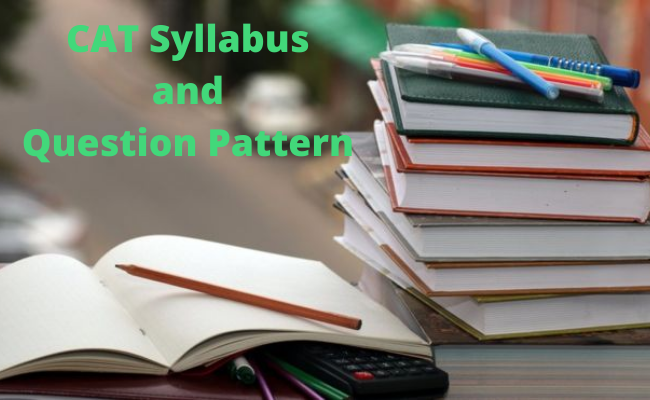
What is CAT?
The Common Admission Test (CAT)is an online based examination whose sole purpose is to test those students who are aspiring to study the courses of business administration. The exams are based to test the students’ calibre to solve questions on the basis of qualitative ability, verbal ability, reading comprehension , data interpretation, and logical reasoning.
The CAT tests are conducted by the Indian Institute of Management on a rotational medium. A person’s CAT scores completely determines his or her affinity towards getting into the University of their Choice. The greater the scores, the greater the placements in the universities across India.
CAT is basically a test of your aptitude and not your knowledge. The CAT Syllabus 2020, question paper will comprise of 100 questions respective of the above mentioned topics, which are-
Under Quantitative Ability –
- Geometry
- Trigonometry
- Mensuration
- Ratio and Proportion
- Number system
- Work and Time
- HCF and HCF
- Algebra
- Profit and Loss
- Quadratic and Linear Equation
- Geometric Progression
- Percentages
- Averages
- Partnership
- Time Speed Distance
- Surds and Indices
- Inequalities Logarithms
Under Verbal Ability and Reading Comprehension , the following are-
- Fill in the blanks
- Grammar
- Para completion and Inference
- Reading Comprehension
- Verbal Logic
- Para jumbles
- Verbal Reasoning
- Syllogisms
- Contextual usage
- Analogies
- Different usage of same word
- Antonyms
- Sentence completion
- Jumbled paragraphs
- Foreign language words used in English
- Sentence correction
- Idiom
- One word substitution
Lastly under Data Interpretation and Logical Reasoning there are
- Blood Relations
- Direction Sense
- Puzzles
- Data Arrangements
- Seating Arrangements
- Data Structures
- Tables
- Bars
- Series
- Coding-Decoding
- Clocks and Calendars
- Family tree
- Venn Diagram
- Syllogism
- Pie Charts
- Line Graphs
- Proposition
- Assumptions
- Statements
- Binary Logic
- Sets
- Caselets
- Data Sufficiency
Coming to the Exam pattern, to understand it and get a grip of it, we need to understand subheadings by subheadings.
Quantitative Ability
- Number of questions – 34
- Social Weight age – 34
- Types of questions – MCQ and Non Mcq
- Negative Marking – -1 for every wrong MCQ
- Topics – As given
- Difficulty Level – Difficulty
Verbal Ability
- Number of questions – 7-11
- Social Weight age – 7-11%
- Types of questions – Non MCQs
- Negative Marking – NO
- Topics – Para jumbles, out of context questions, error correction, vocabulary, sentence completion to analogies and critical reasoning
- Difficulty Level – Easy to Moderate
Reading Comprehension
- Number of questions – 24 to 28
- Social Weight age – 24 to 28 %
- Types of questions – MCQs
- Negative Marking – -1 for ever wrong MCQ
- Topics – Science, history, politics, Environment, society to literature, mythology and abstract topics.
- Difficulty Level – Easy to Moderate
Logical Reasoning
- Number of questions – 16
- Social Weight age – 16 %
- Types of questions – MCQs and NON MCQs
- Negative Marking – -1 for ever wrong MCQ
- Topics – Matrix, arrangement, coding, graph, tables, assumptions
- Difficulty Level –Moderate to Difficult
Data Representation
- Number of questions – 16
- Social Weight age – 16 %
- Types of questions – MCQs and NON MCQs
- Negative Marking – -1 for ever wrong MCQ
- Topics – Pie Chart, denominations, set theory, series, sets, data sufficiency
- Difficulty Level – Moderate to difficult
